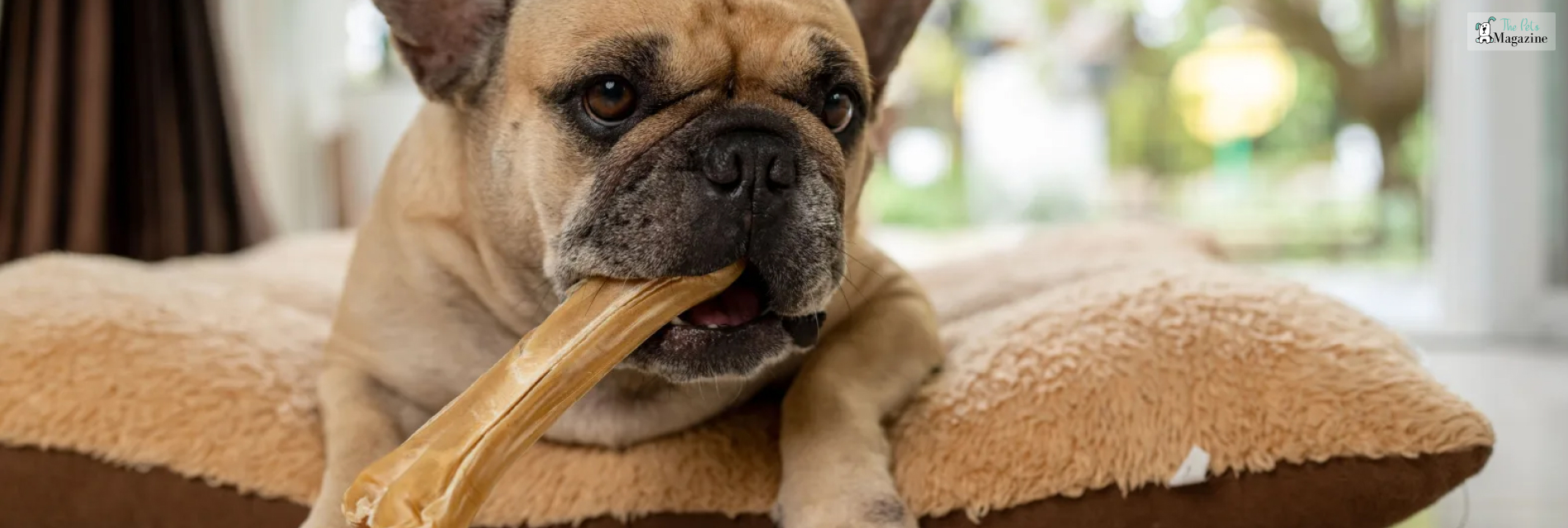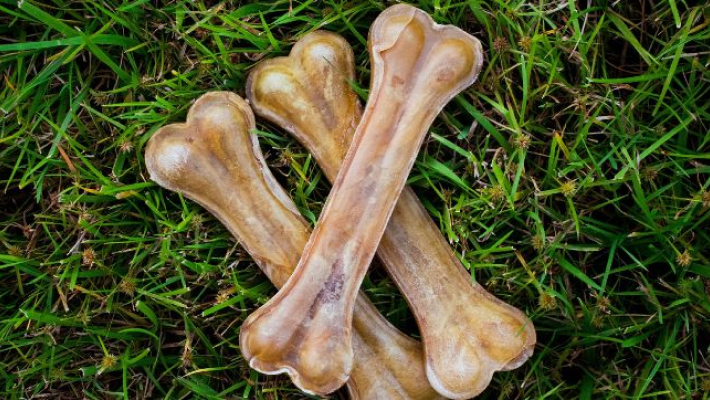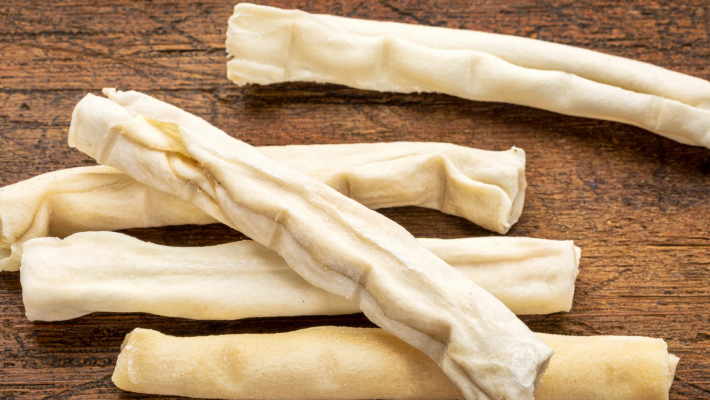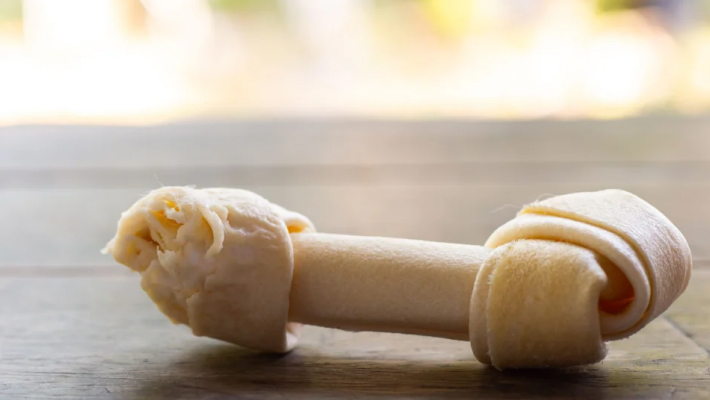Beefhide vs Rawhide: Which Is A Better Treat Option For Your Pet?


If you’re a dog owner, you know how important it is to keep your furry friend happy and entertained. One way to do that is by giving them treats. Beefhide and rawhide treats are two popular options, but what exactly are they? Let’s find out what these treats are made of and the difference between beefhide vs rawhide treats.
What is Beefhide?
Beefhide, as the name suggests, is made from the inner layer of cow or bull hides. It is typically processed by cleaning and cutting the hides into different shapes and sizes. These treats are then dried and often flavored to make them more appealing to dogs.

Beefhide treats are known for their durability, making them a great option for aggressive chewers. They can keep your pup entertained for hours, providing mental and physical stimulation. Additionally, beefhide treats are low in fat and high in protein, making them a healthier alternative to some other dog treats.
What is Rawhide?
Rawhide, on the other hand, is made from the inner layer of the hide of any animal, not just cows or bulls. The hides are cleaned, cut, and then dried to create the treats. Rawhide treats are typically white or cream in color and are available in a variety of shapes and sizes.

Rawhide treats are also known for their durability and can keep your dog occupied for a long time. They are often flavored to make them more enticing to dogs. However, it’s important to note that rawhide treats can be high in calories and may not be suitable for dogs with certain dietary restrictions.
The differences between beef hide and rawhide
While beef hide and rawhide treats may seem similar, there are a few key differences to consider. First and foremost, the source of the hides is different. Beefhide treats are made from the hides of cows or bulls, while rawhide treats can be made from the hides of any animal.

Additionally, the processing methods may differ. Beefhide treats are typically cleaned and cut into various shapes before being dried and flavored. Rawhide treats, on the other hand, may go through a similar process but can also be left in their natural state.
Beefhide vs Rawhide: Which is better as a treat for dogs?

You may be wondering about beef hide vs rawhide and hich is a better treat option for your furbaby. To help you decide which treat to buy, we have mentioned the pros and cons of both the treats below:
Pros and cons of beef hide treats
Beefhide treats have their advantages and disadvantages. On the positive side, they are known for their durability, making them a great option for dogs who love to chew. They can provide mental and physical stimulation, preventing boredom and destructive behavior.
Another benefit of beef hide treats is that they are low in fat and high in protein. This makes them a healthier option compared to some other dog treats. However, it’s important to note that beefhide treats can be high in calories, so portion control is crucial.
One downside of beef hide treats is that they can be quite hard. While this is great for aggressive chewers, it may not be suitable for dogs with dental issues or older dogs with weaker teeth. It’s important to monitor your dog while they chew on beefhide treats to ensure they don’t break off large chunks that could pose a choking hazard.
Pros and cons of rawhide treats
Rawhide treats also have their own set of pros and cons. One of the biggest advantages of rawhide treats is their durability. They can keep your dog entertained for hours, which is especially beneficial for dogs who are prone to separation anxiety.
Rawhide treats are also available in a wide variety of shapes and sizes, making it easy to find one that suits your dog’s preferences. Additionally, they can help keep your dog’s teeth clean by reducing plaque and tartar buildup.
However, rawhide treats can be high in calories and may not be suitable for dogs with certain dietary restrictions. Some dogs may also experience digestive issues after consuming rawhide treats. It’s important to introduce these treats gradually and monitor your dog’s reaction.
Choosing the right treat for your pup’s needs
When it comes to choosing between beef hide vs. rawhide treats, it ultimately depends on your dog’s individual needs and preferences. If you have an aggressive chewer who needs a durable treat, beef hide may be the better option. On the other hand, if your dog enjoys a variety of flavors and textures, rawhide treats may be more suitable.

It’s also important to consider any dietary restrictions your dog may have. If your dog is on a low-calorie diet or has food allergies, you may need to explore alternative treat options.
Alternatives to beef hide and rawhide treats
If you’re not comfortable giving your dog beef hide or rawhide treats, there are plenty of alternative options available. Bully sticks, for example, are made from dried bull or steer pizzles and are a popular choice among dog owners. They are long-lasting, odor-free, and considered a healthier alternative to rawhide treats.
Other alternatives of beefhide vs. rawhide treats include dental chews, nylon bones, and rubber toys. These options can provide similar benefits to beef hide and rawhide treats while offering different textures and flavors to keep your dog entertained.
How to safely give your dog beef hide or rawhide treats
When giving your dog beef hide or rawhide treats, it’s important to follow some safety precautions. We have mentioned some basic safety precautions that you need to follow while giving beef hide or rawhide treats.
- First, always supervise your dog while they are chewing on these treats to prevent choking or ingestion of large chunks. If you notice any signs of distress or discomfort, remove the piece of treat immediately.
- It’s also crucial to choose the right size and shape of the treat for your dog. A piece of treat that is too small compared to your dog’s mouth can pose a choking hazard. On the other hand, if you give a large piece to your small breed dog, he or she will not be able to chew properly and enjoy the treat. Consult with your veterinarian if you’re unsure about the right size for your pup.
- Finally, be mindful of the amount of treats you give your dog. While they may love them, treats should be given in moderation to maintain a balanced diet and prevent weight gain.
In a nutshell!
When it comes to choosing between beefhide vs rawhide treats, there is no one-size-fits-all answer. It’s important to consider your dog’s individual needs, preferences, and any dietary restrictions they may have.
Both beef hide and rawhide treats can provide mental and physical stimulation, but it’s crucial to monitor your dog while they chew on these treats to ensure their safety. If you’re not comfortable with beef hide or rawhide treats, there are plenty of alternative options available that can provide similar benefits. Remember, the most important thing is to keep your pup happy, healthy, and entertained.
Recommended Reading…








Leave A Comment